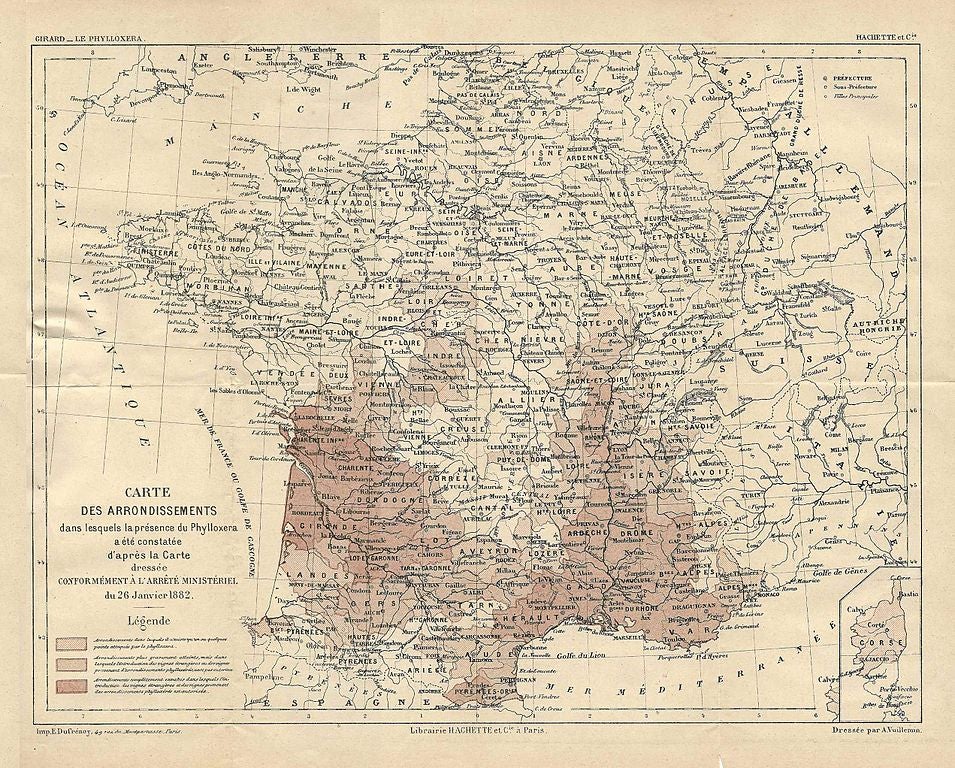My initial reaction was "What about the Great French Wine Blight?"
Here's an 1882 map of the spread of the Phylloxera aphid and I'll be damned, the disaster didn't get too far north of the Loire at Orléans where the river makes that hard left turn:

Otherwise, I had thought the majority of the vines were now the Franco-American hybrids created for their resistance to the aphids and for the old stuff you had to get north of Paris, maybe up to Reims: Pinot Noir and Chardonnay to make your bubbly.
But I was wrong.
From The Guardian:
DNA testing shows 900-year-old savagnin blanc vines identical to modern plants
Today’s drinkers might have more in common with medieval boozers than simply a hangover: research suggests they could be quaffing wine made from identical grapes.
Grapevines are often grown from cuttings of existing plants or by techniques such as grafting, rather than being planted from seeds, since this offers far greater consistency when it comes to the grapes.
That has led some to suggest that certain varieties might have remained essentially unchanged across two millennia since the Roman boom in wine production in the Mediterranean. Grapes were first domesticated more than 6,000 years ago in south-western Asia.
The latest research suggests that might not be too far-fetched. Scientists say they have discovered vines producing savagnin blanc grapes today are genetically identical to vines grown in Orléans 900 years ago.
“It tells us a lot about the ingenuity of winemakers, so they have been using similar techniques for hundreds of years and they have been keeping alive certain vines that consumers really like,” said Dr Nathan Wales, a co-author of the research from the University of York....MUCH MORE
...One seed revealed that vines producing grapes in Orléans around 1050-1200 AD were genetically identical to those that produce savagnin blanc grapes today – in other words, it seems cuttings of the vines have continuously been made for about 900 years....